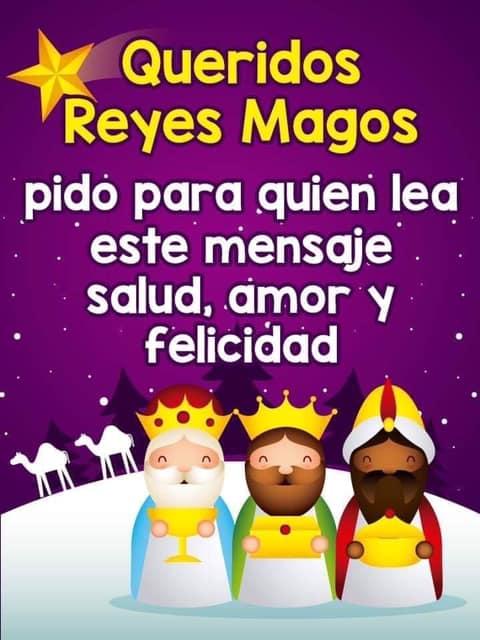
The person who find the figurine in their slice gets crowned king or queen of the day. The fruit represents the jewels from the Reyes Magos, and inside are two hidden objects: a faba bean, and figurine (in some parts, it’s a king, or Magi, in others it’s a different figure). On the evening of January 5th every year, Spanish towns and cities are given over to the colourful parades of the Dia de los Reyes, or the Kings’ Day a celebration of the arrival of the three wise men in Bethlehem after Jesus’ birth. In some parts of the world (including Spain and Mexico), families eat a ring-shaped cake with candied fruit on top, and sometimes cream in the middle. Sometimes they also find that the food has been nibbled at, or even disappeared! When kids wake up in the morning, they find presents (sometimes wrapped, sometimes candy or money) where they left their shoes. Celebra la Navidad y el Da de los Reyes Magos con Pablo y Carlitos (Cuentos Para Celebrar / Stories To Celebrate) (Spanish Edition) Alma Flor Ada and F. During the night, the Magi will travel the world and leave gifts. Many families leave food for the Magi, as well as straw and water for the camels, or a box of greens. In many places, children write letters to the Tres Reyes Magos in anticipation of Epiphany. The night of January 5th, they leave their shoes by the fireplace, doors, or windows. January 5th is a day of parades, in which the Three Kings are reenacted as the Cabalgata de los Reyes Magos, throwing sweets to people watching in the streets. Many families in the Spanish-speaking world leave their Christmas tree up until Epiphany, and have the tradition of children receiving gifts that day. Many Christians celebrate Los Reyes Magos on Epiphany, the twelfth day of Christmas, which falls on January 6th. Since then, Western Church tradition has recorded them as Balthasar (king of Arabia), Melchior (king of Persia), and Gaspar (king of India). Catholic traditions such as those in Spain use these names, though Syrian and Eastern churches record other names. According to the gospel of Matthew, several Magi from the East made the journey to bring the newborn king three royal gifts– gold, frankincense, and myrrh– following a strange star that had appeared in the sky. The story of three kings visiting the Christ child stretches back 2,000 years. Where is this tradition from, and what does it involve? They’ll leave their shoes out, along with straw and water, and wake up the next morning expecting a gift. and other countries are busy writing to Santa, other children are addressing their letters to Los Reyes Magos: the three wisemen who visited baby Jesus. But that’s a story for another day.Inside: Printable Carta a Los Reyes Magos, and resources for teaching about Los Tres Reyes. Who knows? Maybe you will find the baby Jesus and have another fiesta on Feb. You can find a rosca in any Latino supermarket or panadería and enjoy it with hot chocolate. De esta historia surgi la costumbre de ofrecer y recibir regalos, principalmente para los nios, quienes piden, mediante un carta, el juguete que desean.

En ste se recuerda la adoracin a Jess por parte de los Reyes. Este bizcocho suele estar relleno de de frangipane, elaborado con masa brioche cubierto de betún dulce y azúcar de colores verde, dorado y púrpura sin embargo, debido al impacto de la celebración, las. The next day, the children find presents and gifts next to their shoes.Īnyone can partake in this fun celebration of cutting into the rosca de Reyes you don’t need to be of the Christian faith to partake in the festivities. La Fiesta de los Reyes Magos se celebra el 6 de enero y es un da muy especial en distintos pases de habla hispana. El ‘Día de Reyes’ se celebra comúnmente partiendo la famosa ‘Rosca de Reyes’ conocida como ‘King Cake’ en Estados Unidos. Children must leave their shoes by the window or door they also put sweets, food and water to feed the Three Kings and their animals. The children must write a letter to the Three Kings indicating what gifts they want for that day and must explain why they deserve them. 6, many families follow the tradition that says the Three Wise Men will bring gifts to children, just like with Jesus of Nazareth.

In addition to eating the rosca, on the eve of Jan. The holder of baby Jesus must offer tamales and hot chocolate during this celebration. 2, which is yet another celebration called Día de La Candelaria. In Mexico, there is also a tradition that whoever finds a figure of the baby Jesus must take care of it until Feb. The crystallized dried fruits that adorn the bread symbolize the jewels embedded in the crowns of the Magi, and the hidden dolls represent baby Jesus hiding from King Herod’s troops who were in search of all children under the age of 2. The oval shape of the cake represents the infinite circle of love for God.


 0 kommentar(er)
0 kommentar(er)
